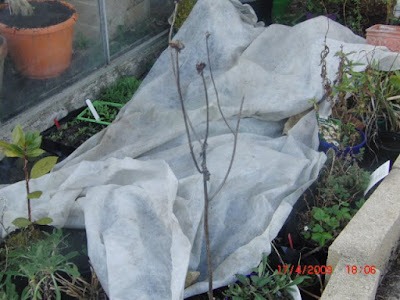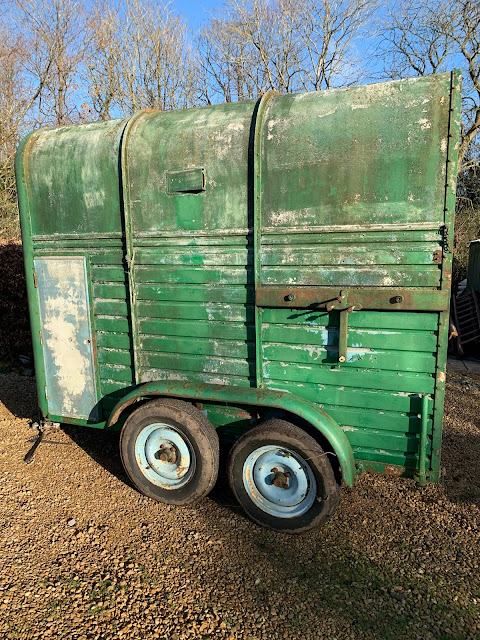 When I moved here a year ago, we had no real garden to speak of, but lots and lots of lawn. So the first job was to fence off an area of the field to make a vegetable garden. I covered the areas to be planted with cardboard, to help kill the grass, and took delivery of a ten ton pile of compost courtesy of Severn Waste who make the compost from green waste. The compost is very reasonable in price, but unfortunately the delivery costs do add up. It all depends how far you are from your local green waste processor - check out your local depot.
When I moved here a year ago, we had no real garden to speak of, but lots and lots of lawn. So the first job was to fence off an area of the field to make a vegetable garden. I covered the areas to be planted with cardboard, to help kill the grass, and took delivery of a ten ton pile of compost courtesy of Severn Waste who make the compost from green waste. The compost is very reasonable in price, but unfortunately the delivery costs do add up. It all depends how far you are from your local green waste processor - check out your local depot.All I had to do was move it to the appointed beds, which took a while I must admit. A few barrowloads every day soon made an impact.
The results have been amazing. Not everything did well, but most of what I planted did ok, considering it's the first year of a new garden. In an indifferent year for tomatoes we had tons, squashes and pumpkins grew like triffids, beans did less well, but salads and herbs were great. The new asparagus bed is looking fine, although it's too new to harvest until next year, so we will see what next year's growth looks like in due course.
The main disappointment was my raspberry canes, most of which failed, so I will be filling in the gaps during the winter months with some new plants. Strawberrries and brassicas both grew well but were subject to caterpillar and bird attacks respectively so I will need to arrange protection for them for next year.
Anyway that was last year, and I have just availed myself of another ten tons of compost, this time for my new ornamental plantings. Luckily the very helpful lady at Severn Waste managed to find a delivery for me at a good price. So I took delivery of the ten tons on the appointed day courtesy of the lovely Louise, of Louise Ward Haulage based in Evesham, who has been operating her 18 ton tipper truck for nearly twenty years, and did an excellent job at a good price. I have a ready supply of cardboard from our warehouse, so I used it as a base, It's not really vital but it rots down readily and does help a bit to kill the weeds and grass. So it's back to barrowing for the next week or two. Before I get to do the good bit, the planting.




































